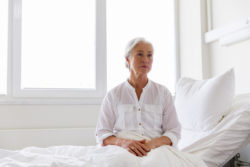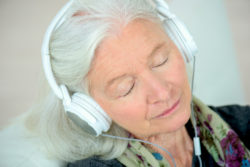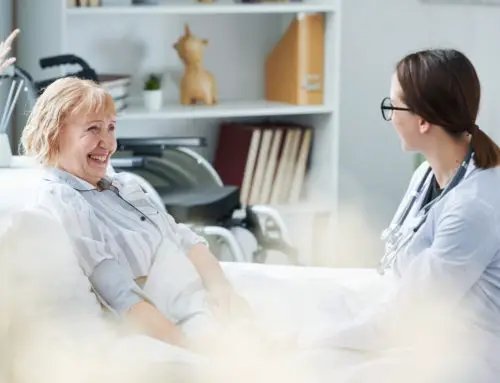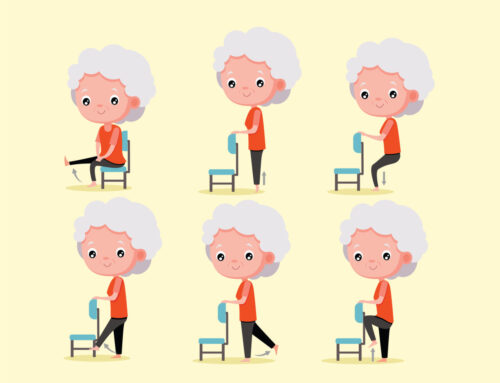Breast cancer in seniors is a highly potent disease that will only be eradicated if women follow the recommended regular mammogram schedule – this is critically important, as 98% of breast cancer is successfully treated when detected early.
On that same note, it’s important to remember that breast cancer risk increases significantly with age, and one third of females diagnosed with breast cancer are over the age of 70. And while the number of breast cancer cases has increased every year for the first 30 years, deaths related to the cancer has decreased in number. However, the chances of survival in senior women is much lower than in younger subjects. Seniors often go undiagnosed for a longer period of time when compared to younger patients, and the common act of ‘undertreatment’ towards seniors with breast cancer, both play a role in lowering the chances of successful treatment for these aging adults.
In this article, we will discuss breast cancer in elderly women and senior breast cancer facts, how to prevent a senior breast cancer diagnosis, and cancer treatment for seniors, including diagnosis information, risk factors, recommendations for breast cancer screening, radiotherapy, surgery, (neo)adjuvant hormone treatment, chemotherapy and other cancer treatment options. In addition, we will
Let’s jump in!
Senior Breast Cancer Overview
Of all the various types of cancer, breast is the most common type found in women.
According to researchers, trends in breast cancer diagnosis records suggest that by 2020, more than 35,000 new breast cancer cases will be diagnosed in women over the age of 80. These statistics reflect the yearly increase in diagnosis cases involving the U.S. population.
Unfortunately, there is a lack of evidence-based data surrounding breast cancer treatment in elderly females over 80 years of age. Due to that fact, the management approach and methods of treatment used in breast cancer patients in this age group remain in a state of controversy.
To add insult to injury, women over the age of 80 are often underrepresented (if represented at all) in clinical trials related to breast cancer. As a result, cancer treatment recommendations are usually adopted from treatment approach plans originally made to best suit younger women, rather than females over 80 years old. Older adults may not benefit from treatment solutions specifically aimed towards younger women.
On occasion, subgroup analyses are conducted, aimed at studying “elderly” patients. The problem with these research study groups, is that their idea of the term “elderly” includes patients who are between the ages of 60 to 65 years old. The result of such studies may be helpful and allow researchers to gather more insight in regards to how 65 year old females respond to breast cancer treatments, but it does very little for those who fall into the “extreme elderly” age group – seniors over 80 years of age.
This is where undertreatment or overtreatment comes into play.
The extreme elderly age group with breast cancer is far more complicated to treat than their younger counterparts – who have youth on their side in the battle to recover. To further complicate the equation, extreme elders often have physical and/or mental conditions that must be considered when determining what method(s) of cancer treatment will work best for their unique situation.
Breast cancer in seniors can be difficult to treat due to many factors, as you read above. Aging seniors make quite the complex patients – as their life expectancy and quality of life are two major concerns that set them apart from younger generations.
Importance of Mammogram Screening for Breast Cancer in Elderly Women
Many women find themselves wondering: Should I still have mammograms after age 70? Or, When should I stop getting mammography screenings for breast cancer?
The guidelines surrounding mammograms and how often women should get them, as long been a source of debate. However, a new study says that a woman’s health status should be the deciding factor, rather than the traditional method of making that determination based off of age alone. The study was recently presented to an audience at the Radiological Society of North America, during their annual meeting.
Within the study, researchers came to the conclusion that women over the age of 70 who are healthy and active should continue receiving their regular mammograms – especially since the older a woman gets, the more likely she is to be diagnosed with breast cancer. Breast cancer is a comparatively higher incidence among aging seniors.
With that in mind, women whose health is declining rapidly and who are not currently healthy may no longer need to get mammograms.
Basing the decision of whether or not one should continue getting regular scheduled mammograms off of a womans health rather than her age, is simple, really. That’s because mammograms are not considered to be an essential for senior women who have a short estimated life expectancy remaining.
Sure, some people may feel that there is an easier way to inform the public that, as soon as they turn 75, they no longer need to get regular mammograms. However, there is a major problem with this outdated method of relying on a person’s age to decide what medical exams they should, or shouldn’t, continue receiving.
Professor of Radiology at the University of Washington School of Medicine and Director of Breast Imaging at the Seattle Cancer Care Alliance, Dr. Constance Lehman states, “I cannot stress enough the importance of early detection and screening.”
Unfortunately, Lehman reports that there has been a disturbing decline in annual screenings for breast cancer.
“Cancer is affecting more and more women, yet they are screening less,” she goes on to say, “It could be due to the cost of an annual mammogram for women with low or no health insurance or because, with new technology like targeted MRIs, women feel that mammography is no longer effective.”
Dr. Lehman wants all those reading this article to know that mammogram screenings are incredibly important, and targeted MRIs are not a viable replacement for mammography.
Risk Factors for Breast Cancer
Anything and everything that may increase your risk of developing breast cancer is considered to be a “risk factor”.
Breast cancer risk factors can be separated into two categories: Risk factors you can control, and risk factors that are beyond your control.
For example, family history and genetic medical conditions that run in your family, your age, and your own personal medical history are all important risk factors for breast cancer that are beyond your control. On the other hand, maintaining a healthy weight, participating in daily physical activity, and your alcohol consumption are all risk factors that you can control.
Risk Factors You Can Control
- Diet – Recent studies have found a direct link between diet and breast cancer risk, as well as the risk of recurrence. According to the Women’s Health Initiative Trial, a diet that is low in fat may help reduce the risk of being diagnosed with breast cancer. Dietitians suggest eating plenty of vegetables and fruit (more than 5 cups a day!), limit your saturated fat intake to less than 10% of your total calories per day. Limit your fat intake to about 30 grams daily. Consume plenty of foods that are high in Omega-3 fatty acids. And last but not least, avoid any trans fats, charred or smoked foods, and processed meats.
- Weight – Women are especially susceptible to breast cancer after menopause, and being overweight in addition just adds fuel to the fire – by increasing a woman’s risk exponentially. Our body stores estrogen within fat tissue after menopause, as soon as it realizes the ovaries are no longer producing the hormone. The more fat tissue you have, the higher your estrogen levels will be. Having high estrogen levels has been linked to an increased risk of breast cancer.
- Exercise – There is a plethora of ever-growing evidence that proves exercise can legitimately reduce breast cancer risk. Engaging in 45 – 60 minutes of physical activity 5 or more times a week is ideal, according to the American Cancer Society.
- Smoking – A small increase in breast cancer risk occurs in those who actively and regularly smoke.
- Alcohol Consumption – Several studies conducted to observe the connection between how much alcohol a woman consumes and her risk of breast cancer. It has been proven that with increased drinking comes an increase in your risk of breast cancer. This is due to the fact that alcohol limits your liver’s ability to control and maintain blood levels, particularly the hormone estrogen, which can result in an increased risk.
- Excessive Exposure to Estrogen Hormones – Due to the fact that estrogen stimulates breast cell growth, when a woman is exposed to estrogen excessively over the course of a period of time and without any breaks, can increase the risk of getting breast cancer. Some risk factors associated with exposure to estrogen are within your control, such as taking combined hormone replacement therapy (estrogen and progesterone; HRT)hj for several years, or taking estrogen alone over the course of 10 years or more
- Use of the Oral Contraceptive Pill – If you’ve been using the oral contraceptive pill (birth control pills) recently, you may have slightly increased your risk for breast cancer. That said, this tiny increase in your risk of being diagnosed only lasts for a short period of time. Once you stop taking the birth control pill, you’ll no longer be at an increased risk for breast cancer.
- Severe Anxiety / Stress – Although there is no scientific proof that stress and anxiety can increase your risk for breast cancer, you’ll have a much more satisfying and joyful life by reducing any and all sources of major stress on your body. Many people find meditation, yoga, visual exercises, prayer and other “mindful measures” to be positive additions to their daily lives.
Risk Factors Beyond Your Control
- Gender – First and foremost, being a woman is the single most significant risk factor associated with developing breast cancer. Men can get breast cancer too, but the female’s breast cells are constantly growing and changing, due to hormones like estrogen and progesterone. Because of this, women are at a much greater risk for breast cancer.
- Family History of Breast Cancer – If you have what’s known as a “first-degree relative” (mom, sister, daughter) with breast cancer, or if you have multiple relatives who are affected by breast cancer or ovarian cancer, your chances of getting breast cancer yourself are significantly higher.
- Race – It’s been proven that white women are at a higher risk of breast cancer than those who are African American. Hispanic, Asian, and Native American women have a lower risk of developing breast cancer.
- Radiation Therapy to the Chest – If you received radiation therapy to your chest area as a child or young adult – as a form of treatment for another type of cancer, this may increase your risk of developing breast cancer or receiving a breast cancer diagnosis.
- Higher Exposure to Estrogen – If you developed your period at 12 years old or younger, if you go through menopause at a late age, or if you’ve been exposed to estrogen through hormones in meat, etc. you may have increased your chances of breast cancer.
Breast Cancer Management in Elderly Women
The Breast Cancer Care specialists recommend that older women with breast cancer should be treated using comprehensive geriatric assessment tools (CGA) in the treatment decision-making process. Their breast multio-disiplinary teams (MDTs) should consider this recommendation when treating senior patients who have breast cancer. While making treatment decisions, the patient – no matter how old or young they are – need to be involved in the final treatment decision and assured that all of their questions and concerns are answered.
In addition, elderly women with breast cancer may have other needs in addition to their cancer care. For example, there may be mental health conditions that must be taken into consideration. Senior women with breast cancer may need added help in completing activities of daily living (ADLs & IADLs).
Cancer in older women, primarily breast cancer, is usually diagnosed at a later stage. Therefore it is less treatable that it may be in younger patients.
Conclusion
There are many factors that must be considered when it comes to breast cancer in senior women. From mental health issues to other physical medical problems all must be considered when a doctor is discussing cancer treatment options with their elderly patient.







